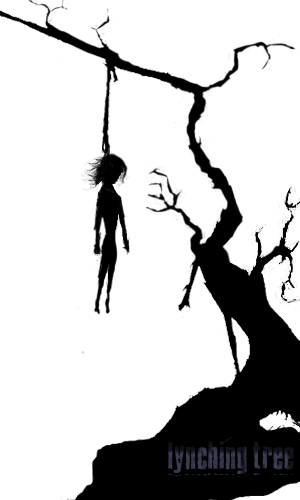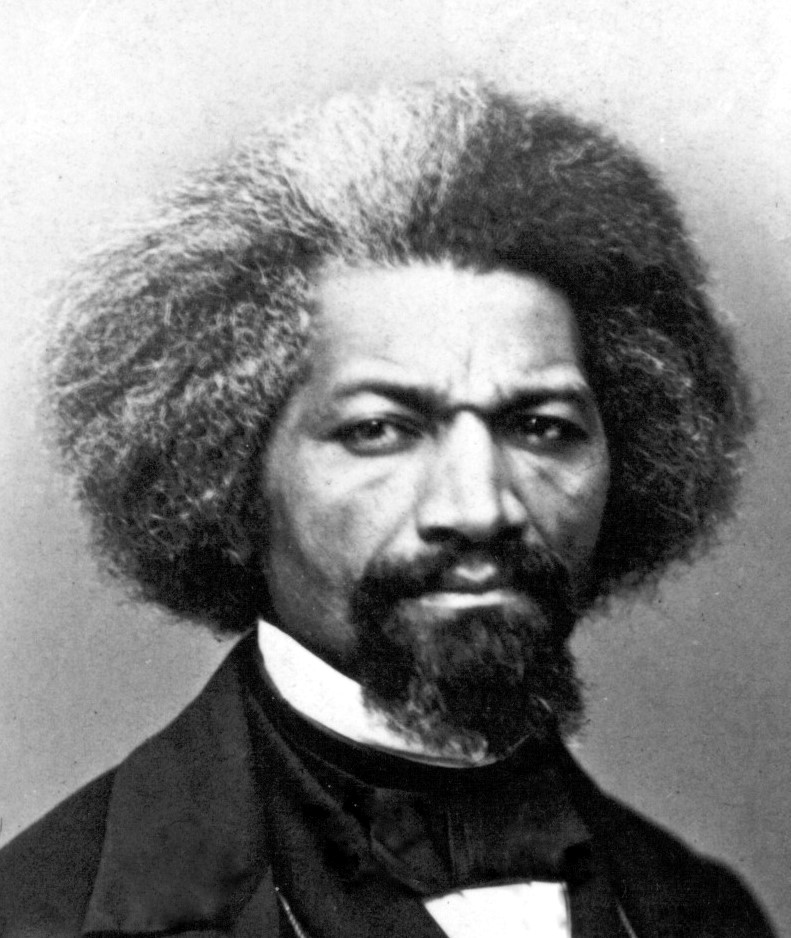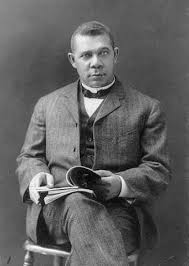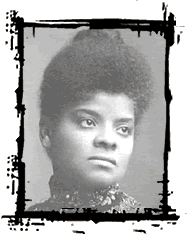




I. In the late 19th century, the South was still dealing with the results of the Civil War and Reconstruction. Southerners referred to themselves as part of the "New South." That referred more to the new economy rather than race relations. By 1877, Reconstruction over and white southerners and so-called "REDEEMER DEMOCRATS" were well on the way to regaining political control in Texas and the South also known as the SOLID SOUTH. This regional white Democratic party rule lasted into the 1950s. It was the same old things from before the Civil War and that included Texas.
The 1876 Constitution eliminated progressive ideas of Reconstruction and confirmed Texas reclaiming its agrarian position and dominance of property ownership. But, they could not reclaim the "Old South." The slaves were gone even though whites controlled most of the land. As a result, 80% of ex-slaves and 30% of Anglos and Hispanics were trapped in SHARECROPPING (an agricultural system in which the farmers do not own the land and pay rent to the owners with their crops) and the CROP-LIEN SYSTEM (system of credit provided by merchants to be paid with future crops). As one historian described it, the South went from "Laborlords" to "Landlords."
During slavery, most of property by landowners was actually people, the slaves. 2/3 of their wealth came from slaves. In Harrison County, TX, 3/4 of the wealth was in slaves. With emancipation, land value became more important and priorities about how to treat land changed. Landowners wanted to increase land values and that meant railroads, roads, cities, and cotton. Although cotton associated with antebellum era, actually much more cotton was produced after the war. Land was more valuable per acre than alternative uses. This meant decline in self-sufficient farms, increase in imports of basic foodstuffs from Midwest like corn. Hog production declined by 1/2 between 1860-1880.
This meant full involvement in the railroad building boom, 1865-1875. It meant end of open range grazing, a tradition in Texas. It meant fencing laws, trespassing laws, and demand for enforcement. Tobacco states also became important and that industry grew at over 7% a year 1869-1909, higher than U.S. average. But work was concentrated in low-wage, low-skill sectors, using imported technology and machinery. Southern per capita (per person) income was about 1/2 the U.S. average although the economy grew at the national rate but share of national capital actually declined. Still, the South grew in importance especially in textiles, tobacco, railraod development, and some unique southern industries like Dr. Pepper and Coca-Cola Bottling Companies.
Economic prosperity also was restrained due to southern reproductive rates. There does not seem to be a racial, economic factor, or urban/rural factor (same rates among all southerners). It was a regional phenomenon. Southern women just had more babies. That spread the money out more and per capita income decline with each child. In the 1870s, the South produced 741.5 children 0-4 per 1,000 women; 20-44. Outside the South that dropped to 545.5 children per 1,000 women. Even in 1900, the South produced 636.0 children per thousand woman while outside the south it was only 467.7. So while the southern economy grew, it could not keep up with population growth. Other factors included banks chargine higher interest rates, low wages, and poor consumers.
In addition, there were man poor newcomers in Texas. Very few of them were foreign immigrants in Texas. Texas leaders were fearful that African-Americans would become too powerful in labor shortage environment, so Texas embarked on a campaign to bring poor whites to Texas from other states. The Texas Almanac 1870 noted to prevent "freemen's conceited notions and lower their growing pretentiousness" that more poor people were needed to compete with them for jobs. Some Texans even suggested bringing Chinese immigrants. Instead, Texas politicians passed own their Homestead Act (federal one did not apply to Texas) offering free land. The focus was toward the Missouri, Georgia, and Tennessee areas. Thousands of poor whites moved to Texas. 100,000 arrived in 1872 and more in 1873 due to Panic of 1873 nationwide economic depression.
Texas' population almost doubled in ten years. Most who came became sharecroppers. Even with cheap land they could not afford to get set up. They along with African-Americans were able to bargain for better. That led to lots of moving from place to place to try to find a better place. At the same time, they competed with children in factories such as textile mills where 1/3 of the workers were children under 14 by 1900. While starting wages for African-Americans and whites was about the same, there was less access to advancement for African-Americans. In addition, education for advancement was inaccessible to many poor since Texas's and South's investment in education was well below the national average (South 1/2 rest of nation by 1900). There was a fear that education would mean poor people would not stay in the low wage system.
For a farmer in Texas, life was little different than prior to the Civil War. Texas was still overwhelmingly rural and typical towns included a courthouse, a few general stores, a drug store, saloons, and churches. Health problems especially along Gulf Coast included cholera, typhus, and yellow fever.
There were few luxuries or amusements. Church as social as ideological with suppers, bazaars, and two hour sermons. The hardships of rural life led to what was called "The Agrarian Revolt." Conditions on farms led to trouble throughout South and Midwest. It was one of the first of many reform movements in late 19th and early 20th centuries and Texans were right in the middle. Trapped into debt due to crop-lien system, increasing numbers of sharecroppers, and fencing limited ability to raise livestock to supplement income. Farmers began to lobby for relief including lower interest rates, easier credit, regulatation of railroad rates, and price controls on commodities. But they got little sympathy from "Redeemer Democrats" who represented the large landowners, merchants, not poor farmers.
Instead southern governments cut expenditures for public services like education, reduced property taxes for large landowners, passed fence laws, expanded vagrancy laws, and established tough penalties for petty crimes, supported convict labor, and even including hunting restrictions for African-Americans so they could not be self-sufficient.
Farmers stepped up pressure by forming organizations. One of the most successful - SOUTHERN FARMERS' ALLIANCE - had its origins in Texas in late 1870s. In 1886, the COLORED FARMERS' ALLIANCE also founded in Texas. Both were late 19th century organizations that lobbied for better conditions for farmers. Women were accepted as equals also. One of biggest successes Jute Strike of 1888, a protest over increased prices for materials used to wrap cotton bales for shipping. By the early 1890s and few other successes and the alliances merged with new political party - POPULISTS or People's Party.

The Populists supported many reforms including government ownership of railroads, direct election senators, term limits, 8 hour workday, and farm subsidies. In some states, African-Americans were active such as in Texas where John B. Rayner spoke to racially mixed groups. The Texas platform called for equality but opposed black officeholders and jurors. Georgia was also biracial. But most African-Americans remained loyal to the Republican party.
Other reform movements developed in South in late 19th century. The Farmers' movement evolved into the Holiness Movement. They stressed simple dress and strict morality. It began the Pentacostal movement. Other movements included the Temperance movement to get people to moderate the use of alcohol and the Suffrage movement to obtain the right to vote for women.
One of leaders of both Temperance and Suffrage movements was Rebecca Latimer Felton of Atlanta. She became first woman member of U.S. Senate in 1922 as a symbolic movement for a day. She reflected attitudes of many southern white middle-class women who hoped to outvote African-American men with their vote. Felton saw lynching as necessary to protect purity of white women. For African-Americans life in the South could be sheer terror.



The late 19th century was a time of danger and uncertainty for African-Americans. Several major forces were at work to deprive African-Americans of opportunity and optimism. One problem was the Republicans no longer actively supported African-American rights. They had lost interest despite the fact African-Americans still voted Republican. But, other than the Populist party they had nowhere else to go. Most African-Americans lost government positions although some hung on like Frederick Douglass (Marshall of D.C.), John Mercer Langston (Minister to Haiti), Blanche Bruce and Robert B. Elliott (Treasury Dept.).

Another problem for African-Americans in South was the U.S. Supreme Court. The Court determined 14th Amendment (civil rights) applied to states not to individuals. An individual could discriminate, but a "state" could not. Also the Court ruled that the federal government had no role in application of state law if the law not discriminatory even if enforced in a discriminatory way. Also state police could "protect the public" by enforcing JIM CROW laws (required segregation). In addition the Court specified there was a difference in "race discrimination" and "race distinction," the latter being constitutional. As a business owner, I may "prefer" one race of customer over another. Also, the Civil Rights Act of 1875 was found to be unconstitutional in 1883. It was an effort to guarantee access to public facilities like hotels, theaters, and juries.
Frederick Douglass revealed the frustration in an 1882 article:
"Though slavery was abolished the wrongs of my people were not ended. Though they were not slaves, they were not yet quite free. No man can be truly free whose liberty is dependent upon the thought, feeling, and action of others, and who has himself no means in his own hands for guarding, protecting, defending, and maintaining that liberty. Yet the Negro after his emancipation was precisely in this state of destitution. He was free from the individual master, but the slave of society. He had neither money, property, nor friends. He was free from the old plantation, but he had nothing but the dusty road under his feet. He was free from the old quarter that once gave him shelter, but a slave to the rains of summer and the frosts of winter. He was, in a word, literally turned loose, naked, hungry, and destitute, to the open sky."
But none of this had the biggest impact. That came in 1896 with PLESSY V. FERGUSON, an 1896 Supreme Court decision that ruled in favor of "separate but equal." Although the intent of these rulings may have been something else, white Southerners including Texans interpreted this to mean they could freely restrict African-Americans and other minority groups, specifically Hispanics.
Afterwards, there were many efforts to exclude certain voters and spread segregation. Laws included literacy and character tests to vote, paying of poll taxes to vote, "White Primary" laws that outlawed non-whites from the Democrat's primary, and the "GRANDFATHER CLAUSES" that granted the vote automatically to anyone whose grandfather could have voted prior to 1867. This meant many whites could vote but not African-Americans who were not allowed to claim whites as their grandfathers. Also, in 1889 Texas segregated public transportation.
By end of 19th century, most southern African-Americans were rural, landless, and sharecroppers. And 80% of all African-Americans lived in the South. Of course, African-Americans were in other occupations traditional to African-Americans including janitors, stonemasons, teamsters, barbering, railroad work, and women in domestic service but the were getting heavy competition from European immigrant women. Most unions excluded African-Americans but there were major exceptions as we will see later. Race riots were common and the lynching of African-Americans was on the rise.
Not surprising, thousands of African-Americans went West and those left behind turned inward developing their own communities. The church grew in importance although Protestantism divided into all white and all black congregations. In 1880 Baptists officially split. African-American clergymen became natural leaders while the churches performed many roles from school building to charity drives.



There were also African-Americans who wanted to change things. A new leader emerged in 1895, BOOKER T. WASHINGTON. In his Atlanta Exposition Speech he introduced his ideas that would come to be known as the "Atlanta Compromise." He was a moderate and ex-slave who said "agitation of questions of social equality is the extremist folly." He urged caution, patience, hard work, and a practical education. Under these circumstances, eventually the white community would accept them. This became known as "gradualism."
The same year he gave this speech, W.E.B. DUBOIS became the first African-American PhD from Harvard. He would become Washington's nemesis. He accused Washington of accepting the alleged inferiority of African-Americans. Their confrontation lasted until Washington died in 1915. DuBois demanded equality immediately, the best education, and said African-Americans did not need to prove anything. In 1909 he would be part of founding of NAACP.
Another leader in the effort to obtain rights for African-Americans was IDA B. WELLS who owned a newspaper in Memphis and used her columns to bring attention to the lynching problem.
There was other good news for African-Americans despite the troubles. In Dallas, the Elm Thicket Community (near Love Field, Oak Lawn area) was prosperous and fashionable revealing part of the new black middle-class that was developing in the South's urban areas. During the late 19th century the first African-American owned banks opened in South, African-American women organized the National Association of Colored Women (1896) with lynching as a major focus, the same year George Washington Carver was appointed director of agricultural research at Tuskegee (peanut, sweet pea, soybean work), and five African-Americans won the Congressional Medal of Honor in 1898 (Spanish-American War). The first black owned insurance companies also opened in 1898 and the 1900 World's Fair in Paris included the "Exposition des Negres d'Amerique" that won several awards.
On the other hand, between 1881 and 1900 over 1,600 African-Americans were lynched throughout the U.S.
and not exclusively in the South. By end of 19th century, African-Americans not only migrated to the West but began moving North to take advantage of the Industrial Revolution, our next topic.
